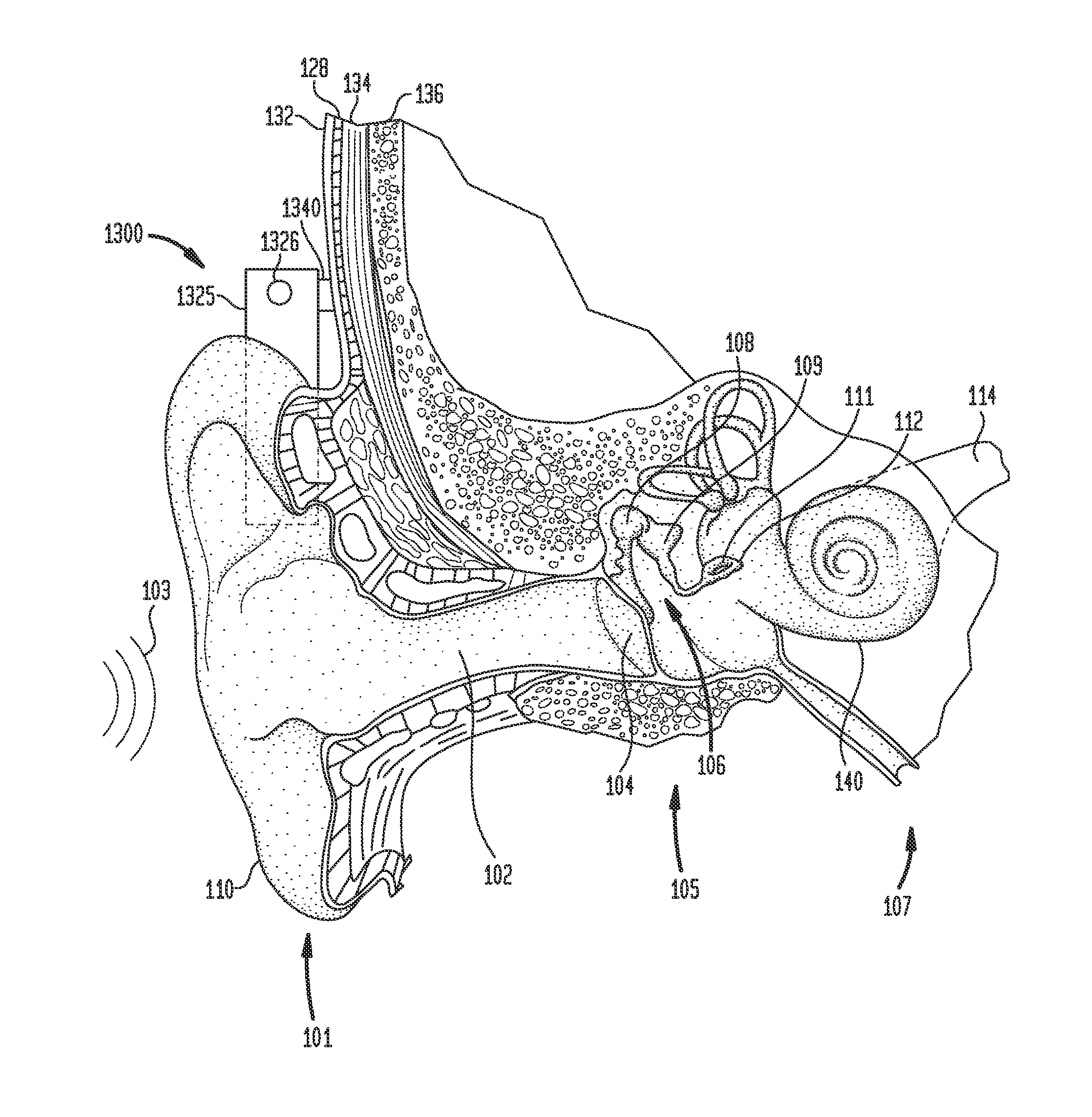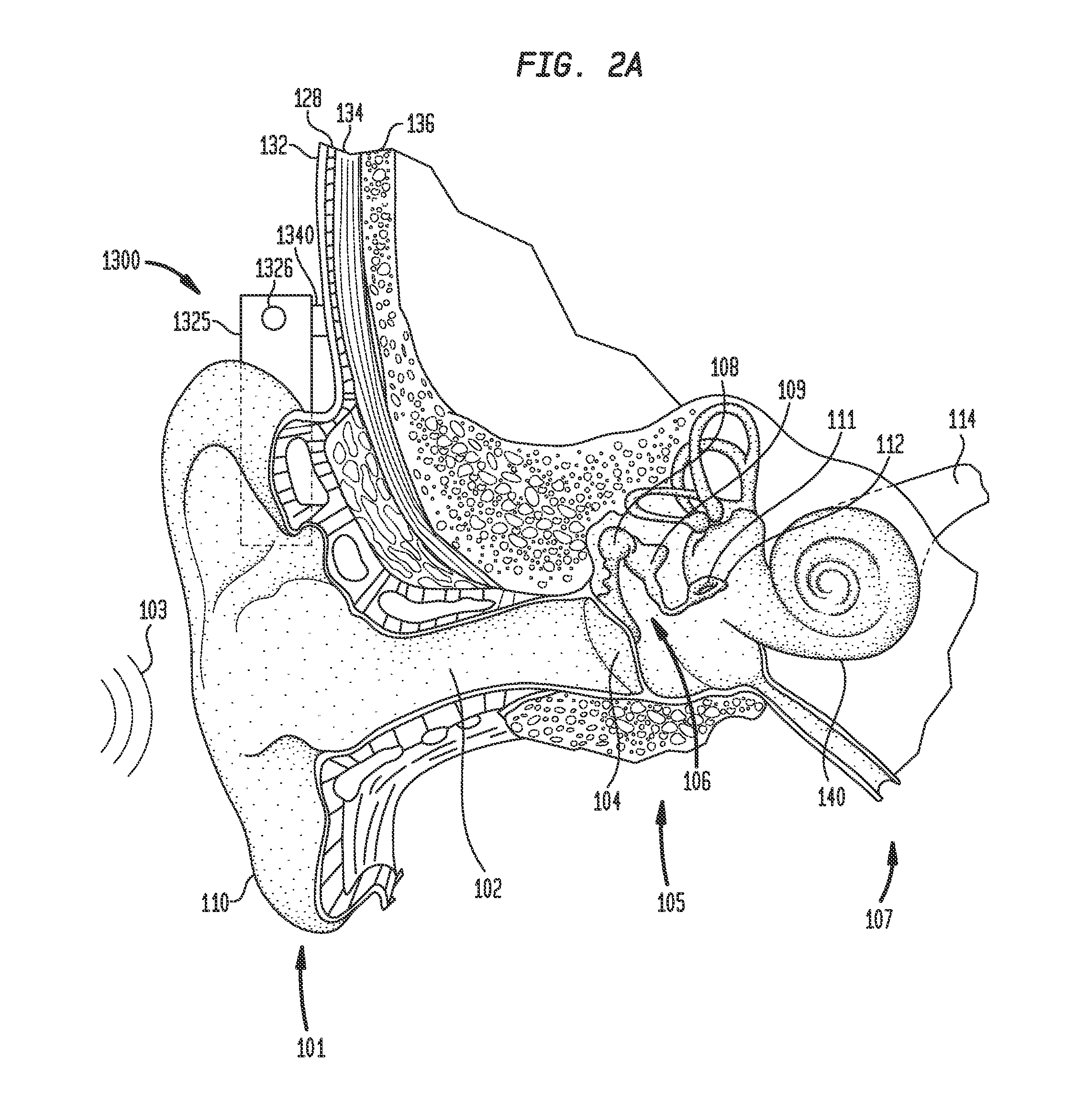Assessing auditory prosthesis actuator performance
a technology for auditory prostheses and actuators, applied in the field of auditory prostheses, can solve problems such as conductive hearing loss, impeded normal mechanical pathways of the outer and/or middle ear, and difficulty in detecting the sound received
- Summary
- Abstract
- Description
- Claims
- Application Information
AI Technical Summary
Benefits of technology
Problems solved by technology
Method used
Image
Examples
Embodiment Construction
[0024]Aspects of the present technology are generally directed to an auditory prosthesis comprising an actuator, e.g., an electromechanical actuator, configured to apply mechanical stimulation to a recipient to cause a hearing percept, and a driver configured to deliver a driving signal to the actuator to cause actuation thereof. The auditory prosthesis further comprises a measurement circuit configured to measure one or more values of a momentum-indicative parameter of the actuator, and a control circuit to assess how well the actuator is performing; that is, the quality of actuator performance. Such assessment can be utilitarian because the actuator can behave differently due to aging of its components and / or due to different environmental conditions. For example, due to fluctuations in environmental factors such as barometric pressure and temperature, the resonance frequencies of the actuator can correspondingly vary. As an auditory prosthesis is ‘fitted’ for a particular recipie...
PUM
 Login to View More
Login to View More Abstract
Description
Claims
Application Information
 Login to View More
Login to View More - R&D
- Intellectual Property
- Life Sciences
- Materials
- Tech Scout
- Unparalleled Data Quality
- Higher Quality Content
- 60% Fewer Hallucinations
Browse by: Latest US Patents, China's latest patents, Technical Efficacy Thesaurus, Application Domain, Technology Topic, Popular Technical Reports.
© 2025 PatSnap. All rights reserved.Legal|Privacy policy|Modern Slavery Act Transparency Statement|Sitemap|About US| Contact US: help@patsnap.com



